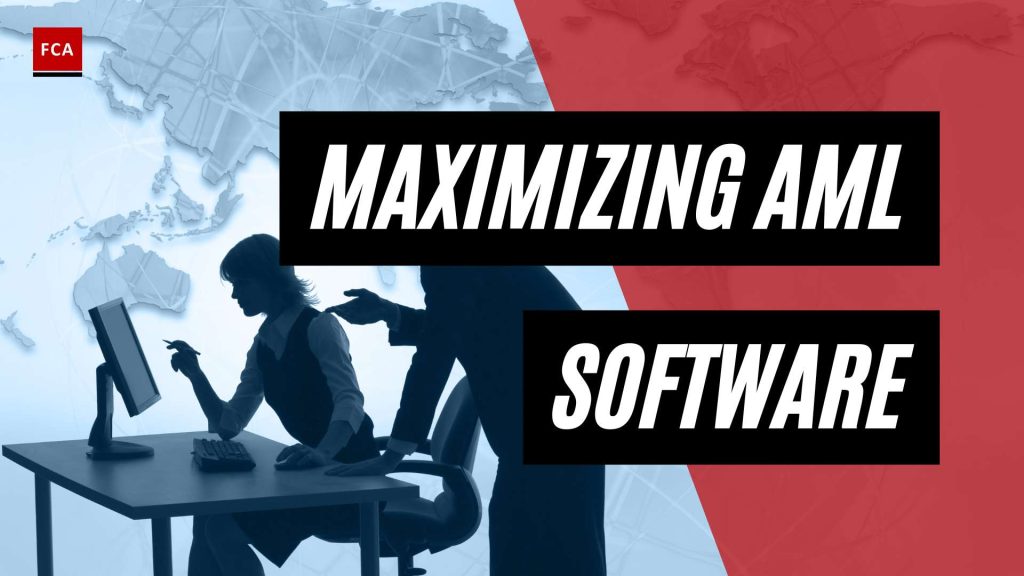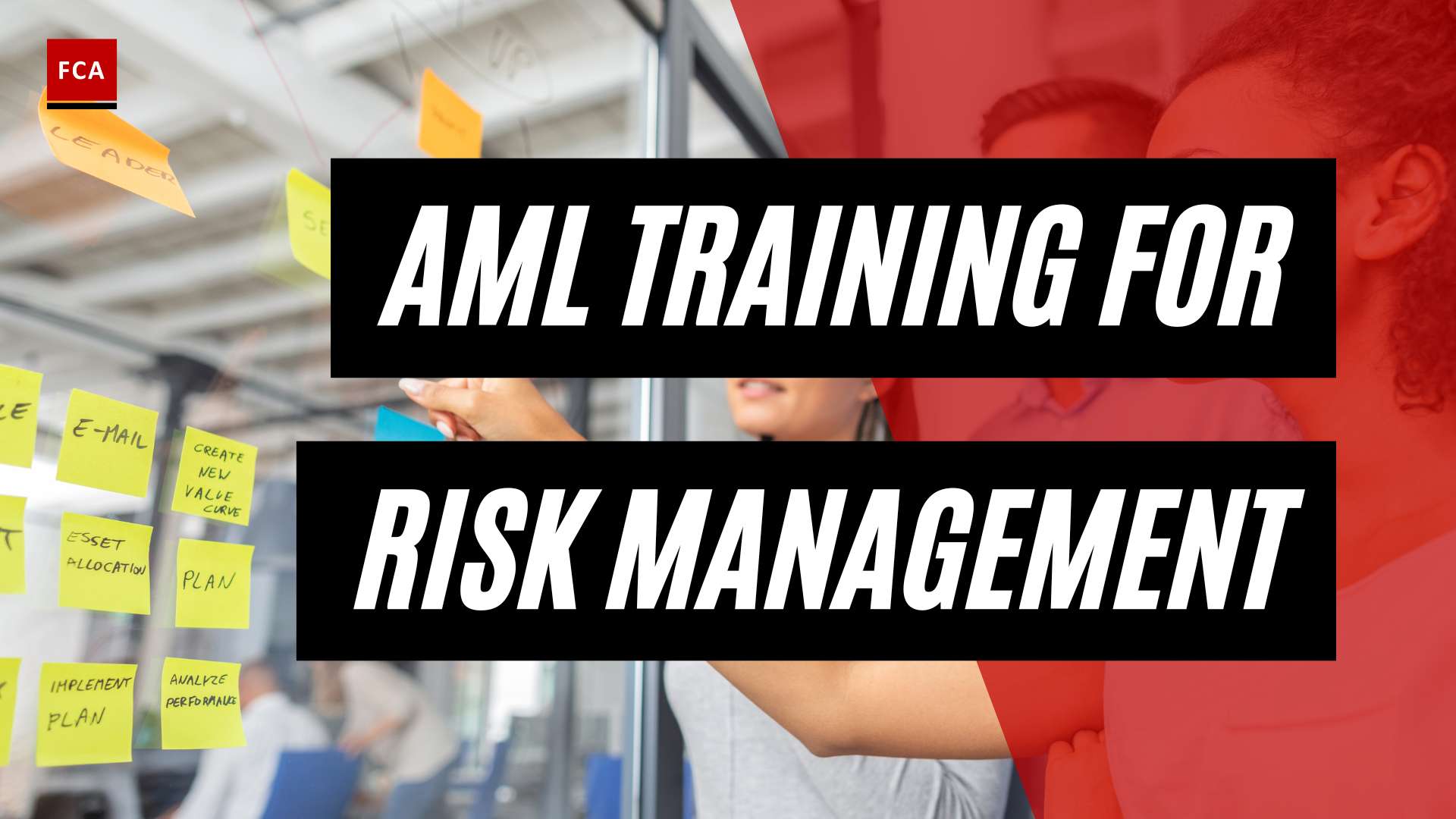Understanding AML Compliance
To effectively combat the risks associated with money laundering and other financial crimes, organizations must have a thorough understanding of Anti-Money Laundering (AML) compliance. This section will explore the importance of AML compliance and the role that AML compliance software plays in supporting these efforts.
Importance of AML Compliance
AML compliance is of paramount importance for financial institutions and businesses operating in high-risk industries. Implementing robust AML compliance measures helps organizations detect and prevent money laundering, terrorist financing, and other illicit activities. Failure to comply with AML regulations can result in hefty fines, reputational damage, and legal consequences.
The primary objective of AML compliance is to ensure that organizations have effective systems and controls in place to mitigate the risk of being used for money laundering activities. By conducting thorough AML risk assessments, organizations can identify and understand the specific risks they face and tailor their compliance efforts accordingly.
AML compliance also helps organizations maintain regulatory alignment and meet their reporting obligations. International AML regulations, such as those set forth by the Financial Action Task Force (FATF), provide guidance and standards that organizations must adhere to in order to combat money laundering on a global scale (international AML regulations). Compliance with these regulations demonstrates an organization’s commitment to ethical and responsible business practices.
Furthermore, AML compliance is essential for establishing trust with customers and stakeholders. Customers, especially in industries prone to money laundering and terrorist financing, expect their financial service providers to have stringent AML measures in place. Demonstrating a strong commitment to AML compliance helps organizations build a reputation for trustworthiness and reliability.
Role of AML Compliance Software
AML compliance software plays a crucial role in supporting organizations’ efforts to combat financial crimes. This software automates and streamlines various aspects of the AML compliance process, making it easier for organizations to monitor customer information, detect abnormal transactions, and ensure compliance with required AML regulations.
By leveraging AML compliance software, organizations can enhance their Know Your Customer (KYC) regulations, conduct robust customer due diligence, and effectively identify and manage high-risk customer profiles. These software solutions utilize advanced technologies to verify customer identities, screen for sanctions and politically exposed persons (PEPs), and detect potential money laundering activities.
Key features of AML compliance software include:
- Risk assessment and customer due diligence: AML software helps organizations assess the risk associated with each customer and conduct thorough due diligence to ensure compliance with regulatory requirements.
- Transaction monitoring and suspicious activity reporting: AML software continuously monitors transactions and alerts compliance professionals to any suspicious activity that may indicate potential money laundering or other illicit activities.
- Integration with third-party data sources: AML software integrates with various data sources, such as public records, watchlists, and regulatory databases, to enhance the accuracy and effectiveness of compliance efforts.
Notable AML compliance software providers include ComplyAdvantage, LexisNexis Risk Solutions, Dow Jones Risk and Compliance, LSEG Data and Analytics, and Oracle. These providers offer comprehensive solutions that cater to the specific needs of organizations in different industries (Vespia).
By leveraging AML compliance software, organizations can enhance their AML risk detection capabilities, streamline compliance processes, and improve efficiency for compliance professionals. These software solutions are crucial in the digital era, where traditional and manual procedures are no longer sufficient to combat financial crimes effectively (Unit21).
Navigating International AML Laws
To ensure effective Anti-Money Laundering (AML) compliance, it is crucial for businesses to navigate the complex landscape of international AML laws and regulations. Understanding the global standards and obligations can help organizations establish robust AML compliance programs. In this section, we will explore the Financial Action Task Force (FATF) recommendations, key AML laws and directives, and compliance obligations for financial institutions.
Financial Action Task Force (FATF) Recommendations
The Financial Action Task Force (FATF), established in 1989, plays a pivotal role in combating money laundering and terrorist financing on a global scale. Comprised of 39 member countries, including major economies like the United States, the United Kingdom, Japan, China, Germany, and the European Commission, the FATF sets international standards and recommendations for AML compliance programs.
To comply with FATF recommendations, financial institutions should adopt a risk-based approach, conduct customer due diligence measures, maintain customer records for a minimum of five years, implement controls to identify Politically Exposed Persons (PEPs), and report suspicious activities to competent authorities. Reporting suspicious transactions is a critical component of a comprehensive AML compliance program. For more information on the most important AML compliance laws, refer to our article on AML compliance laws.
Key AML Laws and Directives
In addition to the FATF recommendations, various countries and regions have enacted their own AML laws and directives to combat money laundering and terrorist financing. These laws often reflect the international standards set by the FATF while addressing specific regional concerns.
For example, the European Union introduced the 6th Anti-Money Laundering Directive (6AMLD) in October 2018, which came into effect on December 3, 2020. This directive strengthens previous AML directives, introduces new provisions to combat financial crimes, and broadens the definition of money laundering. Entities affected by 6AMLD include financial institutions, virtual asset service providers, tax advisors, and auditors.
In the United States, the Bank Secrecy Act (BSA) mandates that financial institutions maintain comprehensive records of clients’ identities and transactions. Institutions must also submit various reports to adhere to AML requirements. Non-compliance or intentional neglect of AML obligations under the BSA can lead to severe penalties, including fines of up to $250,000 or imprisonment for up to five years. To learn more about AML compliance laws specific to your country or region, consult our article on international AML regulations.
Compliance Obligations for Financial Institutions
Financial institutions have specific compliance obligations to fulfill in order to effectively combat money laundering and terrorist financing. These obligations may vary depending on the jurisdiction and the nature of the institution’s operations.
Common compliance obligations for financial institutions include:
- Conducting thorough customer due diligence (CDD) procedures to verify the identity of customers and assess their potential risks.
- Implementing robust transaction monitoring systems to detect and report suspicious activities.
- Establishing strong internal controls and procedures to prevent money laundering and terrorist financing.
- Providing ongoing AML training to employees to ensure awareness and understanding of AML policies and procedures.
- Conducting periodic independent audits and assessments to evaluate the effectiveness of the institution’s AML compliance program.
By understanding and complying with these obligations, financial institutions can contribute to the global effort in combating money laundering and terrorist financing.
Navigating international AML laws requires a deep understanding of the FATF recommendations, key AML laws and directives, as well as the compliance obligations for financial institutions. By staying informed and implementing comprehensive AML compliance programs, businesses can safeguard themselves against the risks associated with money laundering and terrorist financing.
High-Risk Industries and Customers
When it comes to anti-money laundering (AML) compliance, it’s important to identify and understand the high-risk industries and customers that are more susceptible to money laundering and terrorist financing. By recognizing these risks, businesses can implement appropriate measures to mitigate them.
Industries Prone to Money Laundering and Terrorist Financing
Certain industries have a higher likelihood of being involved in money laundering and terrorist financing activities. These include:
| High-Risk Industries |
|---|
| Financial institutions such as banks, currency exchange houses, and payment processing companies |
| Businesses involved in the sale of real estate, cars, boats, and other high-value assets |
| Companies with branches in high-risk countries |
| Online businesses with high-risk delivery channels, such as those primarily providing virtual services |
| Industries centered in specific countries identified by international governing bodies like the Financial Action Task Force (FATF) |
Source: Sanctions.io
These industries are more susceptible to money laundering and terrorist financing due to factors such as large volumes of electronic payments, cash-based transactions, and geographical locations. It is essential for businesses operating in these industries to have robust AML compliance programs in place to detect and prevent illicit activities.
High-Risk Customer Profiles
In addition to high-risk industries, certain customer profiles pose an increased risk of money laundering and terrorist financing. These profiles include:
| High-Risk Customer Profiles |
|---|
| Customers who primarily pay with cash |
| Politically exposed persons (PEPs) |
| Individuals with criminal histories |
| Customers linked to terrorist organizations |
Source: Sanctions.io
Identifying and thoroughly assessing the risk associated with these customer profiles is crucial for effective AML compliance. Implementing robust know your customer (KYC) regulations and conducting thorough AML risk assessments can help businesses identify and mitigate potential risks associated with high-risk customers.
By understanding the industries and customer profiles that are more susceptible to money laundering and terrorist financing, businesses can tailor their AML compliance efforts accordingly. This involves implementing appropriate AML compliance software, conducting regular AML compliance training, and staying updated with anti-money laundering legislation and AML reporting obligations. By doing so, businesses can effectively safeguard themselves against financial crimes and contribute to a safer global financial system.
Key Features of AML Compliance Software
To effectively manage anti-money laundering (AML) compliance, organizations rely on advanced AML compliance software. These software solutions offer a range of key features that facilitate risk assessment, customer due diligence, transaction monitoring, suspicious activity reporting, and integration with third-party data sources. Let’s explore these features in more detail.
Risk Assessment and Customer Due Diligence
AML compliance software leverages sophisticated algorithms and data analysis to perform comprehensive risk assessments and customer due diligence. It helps organizations verify customer identities, screen for sanctions and politically exposed persons (PEPs), and detect potential high-risk customers. By automating these processes, AML compliance software streamlines the onboarding and ongoing monitoring of customers, ensuring compliance with KYC regulations.
By centralizing customer data and conducting continuous monitoring, organizations can better identify and assess potential risks associated with money laundering and other financial crimes. Through the use of advanced analytics, AML compliance software enables organizations to identify unusual behavior patterns and potential red flags, allowing for timely intervention and investigation. This helps organizations stay on top of their compliance obligations while minimizing false positive alerts.
Transaction Monitoring and Suspicious Activity Reporting
AML compliance software includes robust transaction monitoring capabilities. It automatically analyzes and detects suspicious transactions, patterns, and behaviors in real-time or through batch processing. By leveraging machine learning and rule-based algorithms, the software can identify potentially fraudulent or illegal activities, such as structuring, layering, or unusual transaction volumes.
When suspicious activity is detected, the software generates alerts and facilitates the reporting process. Compliance professionals can review and investigate these alerts, ensuring that potential money laundering or terrorist financing activities are properly identified and reported to the relevant authorities. By streamlining the reporting process, AML compliance software helps organizations meet their AML reporting obligations efficiently and effectively.
Integration with Third-Party Data Sources
To enhance the accuracy and effectiveness of AML compliance measures, AML compliance software integrates with various third-party data sources. These sources provide access to up-to-date information, including global AML watchlists, sanctions lists, adverse media, and other relevant databases. By cross-referencing customer data with these external sources, the software helps organizations identify and flag potential risks associated with money laundering or terrorist financing activities.
By leveraging these external data sources, AML compliance software helps organizations stay compliant with anti-money laundering legislation and international AML regulations. It enables organizations to access comprehensive and accurate information, ensuring that they have a holistic view of their customers’ profiles and activities.
By incorporating risk assessment and customer due diligence, transaction monitoring and suspicious activity reporting, and integration with third-party data sources, AML compliance software provides organizations with powerful tools to combat financial crime. These key features facilitate efficient compliance operations, improve risk detection, and enable organizations to streamline their AML compliance processes. By leveraging AML compliance software, organizations can safeguard their businesses and meet their regulatory obligations in an increasingly complex and challenging landscape.
Notable AML Compliance Software Providers
When it comes to selecting the right AML compliance software, there are several notable providers in the market. These software solutions help organizations streamline their compliance processes, enhance risk detection, and ensure regulatory compliance. Let’s explore some of the top AML compliance software providers:
ComplyAdvantage
ComplyAdvantage is a leading provider of AML compliance software that leverages AI-driven fraud and risk detection solutions. Their advanced technology reduces false positives by up to 70 percent and shortens onboarding cycle times by up to 50 percent for banks (ComplyAdvantage). By utilizing artificial intelligence, ComplyAdvantage enables organizations to efficiently identify potential money laundering and financial crime activities.
LexisNexis Risk Solutions
LexisNexis Risk Solutions offers comprehensive legal, regulatory, and business information and analytics solutions. Their AML compliance software is trusted by seven of the world’s top ten banks. With their vast database and analytical capabilities, LexisNexis Risk Solutions assists organizations in effectively managing compliance risks and meeting regulatory requirements (ComplyAdvantage).
Dow Jones Risk and Compliance
Dow Jones Risk and Compliance provides risk management data and integrated technology solutions to help organizations manage regulatory and reputational risks. Their AML compliance software is utilized by various businesses, including companies like Hobson Prior and ICBC. Dow Jones Risk and Compliance enables organizations to conduct thorough due diligence, monitor high-risk activities, and stay up-to-date with regulatory changes (ComplyAdvantage).
LSEG Data and Analytics
LSEG Data and Analytics, formerly known as Refinitiv, offers a wide range of financial data, analytics, and news. Their AML compliance solutions cater to the needs of organizations such as Deutsche Bank and JPMorgan Chase. LSEG Data and Analytics provide comprehensive tools to help organizations effectively detect and mitigate money laundering risks, ensuring compliance with global AML regulations (ComplyAdvantage).
Oracle
Oracle, a well-known technology company, offers AML compliance software solutions to various industries. Their software is trusted by organizations like Credit Agricole and Aman Bank. Oracle’s AML solutions provide robust features to assist organizations in meeting their compliance obligations, conducting thorough risk assessments, and ensuring adherence to anti-money laundering regulations (ComplyAdvantage).
These notable AML compliance software providers offer a range of features and capabilities to assist organizations in effectively managing their AML compliance obligations. When selecting a software provider, it’s important to consider factors such as regulatory alignment, industry-specific features, and integration capabilities. Additionally, organizations should prioritize software solutions that provide reporting and audit trail functionality to ensure transparency and accountability in their compliance efforts.
Benefits of AML Compliance Software
Implementing robust AML compliance measures is crucial for businesses to safeguard against financial crime and comply with regulatory requirements. AML compliance software plays a vital role in enhancing these efforts by offering various benefits to organizations. Let’s explore some of the key advantages of using AML compliance software.
Enhanced AML Risk Detection
One of the primary benefits of AML compliance software is its ability to enhance the detection of AML risks. By automating risk management processes, AML compliance software helps financial institutions monitor customer information and detect abnormal transactions more effectively. Leveraging features such as AML risk assessment and high-quality transaction monitoring, the software enables organizations to verify customers, flag suspicious behavior, screen for sanctions and politically exposed persons (PEP), and mitigate false positives (Unit21). This enhanced risk detection empowers businesses to proactively identify and address potential money laundering activities.
Streamlined Compliance Processes
The implementation of AML compliance software streamlines compliance processes for businesses. The software automates various tasks that were traditionally performed manually, making the overall compliance workflow faster and more efficient. AML compliance software incorporates tools such as identity verification, transaction monitoring, case management, sanctions and PEP screening, risk assessment and management, suspicious activity reporting, investigation optimization, and alert scoring. These tools optimize AML compliance operations, allowing compliance professionals to focus on critical analysis and decision-making rather than repetitive administrative tasks (Unit21). With streamlined compliance processes, organizations can ensure that they meet their regulatory obligations in a more efficient and timely manner.
Improved Efficiency for Compliance Professionals
AML compliance software significantly improves the efficiency of compliance professionals. By automating manual processes and centralizing compliance operations, the software reduces the need for manual work and minimizes the risk of errors. Compliance professionals can utilize an integrated AML compliance system, which includes reporting and case management functionalities, to streamline their work. This integration allows for better time management and reduces the pressure on compliance professionals, enabling them to focus on critical tasks and strategic decision-making (Sanction Scanner). Additionally, the software facilitates reporting and audit trail functionalities, ensuring that organizations can effectively demonstrate their compliance efforts to regulators and auditors (Idenfy).
By leveraging AML compliance software, organizations can enhance their AML risk detection capabilities, streamline compliance processes, and improve the efficiency of compliance professionals. These software solutions play a crucial role in helping businesses stay ahead of evolving regulatory requirements and combat financial crime effectively.
The Role of AI in AML Compliance Software
As technology continues to advance, the integration of artificial intelligence (AI) in AML compliance software has become increasingly prevalent. AI-driven capabilities offer significant advantages in fraud detection, risk analysis, and document processing, enhancing the effectiveness and efficiency of AML compliance efforts.
AI-Driven Fraud Detection and Risk Analysis
AML compliance software leverages AI to improve the detection of suspicious transactions and behaviors. By utilizing advanced algorithms and machine learning techniques, the software can analyze large volumes of data and identify patterns indicative of potential money laundering activities. These algorithms continuously learn from new data, enabling them to adapt to evolving money laundering techniques and enhance the accuracy of risk assessments.
With AI-driven analytics, financial institutions can monitor transactions in real-time and identify potential risks more effectively. By analyzing vast amounts of data, AI algorithms can detect anomalies, unusual patterns, and hidden relationships that might indicate money laundering or other illicit activities. This enables compliance professionals to prioritize their efforts and focus on high-risk activities, reducing the number of false positives and improving overall compliance outcomes.
Leveraging AI for Document Analysis and Data Extraction
Another crucial role of AI in AML compliance software is document analysis and data extraction. By incorporating AI technology, the software can automatically extract relevant information from various documents, such as identification documents and financial statements. This streamlines the customer due diligence process and improves the accuracy of risk assessments.
AI-powered data extraction capabilities enable AML compliance software to extract essential data points from multiple sources quickly and accurately. This eliminates the need for manual data entry and reduces the risk of human error. By automating this process, compliance professionals can save time and allocate their resources more efficiently, focusing on higher-value tasks such as data analysis and decision-making.
With the aid of AI, AML compliance software can enhance the accuracy and effectiveness of risk assessments, transaction monitoring, and suspicious activity reporting. By leveraging the power of AI-driven fraud detection, risk analysis, and document processing, financial institutions can strengthen their AML compliance efforts and better protect themselves against money laundering and other financial crimes.
To explore more about AML compliance software and its benefits, continue reading our article on Safeguard Your Business: Exploring the Potential of AML Compliance Software.
Considerations for Selecting AML Compliance Software
When choosing the right AML compliance software for your business, there are several important factors to consider. These considerations ensure that the software aligns with global and local regulatory requirements, caters to industry-specific needs, and provides robust reporting and audit trail functionality.
Global and Local Regulatory Alignment
AML compliance software should align with global and local regulatory requirements to ensure effective compliance with AML laws and regulations. It is crucial that the software incorporates the necessary features and functionalities required by the relevant regulatory bodies in your jurisdiction. By staying in line with the anti-money laundering legislation and AML reporting obligations, the software helps your business meet compliance requirements and mitigate the risk of regulatory penalties and AML enforcement actions.
Industry-Specific Features and Integration Capabilities
Different industries have unique AML compliance needs due to the nature of their operations. AML compliance software should have industry-specific features and integration capabilities to cater to these needs. Whether you are in fintech, banking, payment processing, insurance, gambling, crypto, or real estate, the software should be able to accommodate the specific requirements of your industry. This includes adapting to know your customer (KYC) regulations, conducting thorough AML risk assessments, and integrating with relevant data sources and systems specific to your industry.
Reporting and Audit Trail Functionality
Reporting and audit trail functionality are essential components of AML compliance software. The software should provide comprehensive reporting capabilities, allowing financial institutions to generate detailed reports for regulators and auditors to demonstrate compliance with AML laws and regulations. This includes generating reports related to customer due diligence, transaction monitoring, and suspicious activity reporting. Robust audit trail functionality enables financial institutions to track and document all compliance activities, ensuring transparency and accountability in their AML processes. These features help streamline AML compliance audits and provide evidence of your organization’s commitment to compliance.
By considering the alignment of AML compliance software with global and local regulations, industry-specific features and integration capabilities, and reporting and audit trail functionality, you can select a software solution that effectively supports your business’s AML compliance efforts. Remember to assess your organization’s unique requirements and consult with compliance professionals to ensure you choose the most suitable software for your specific needs.
AML Compliance in the Digital Era
As the world continues to undergo rapid digitalization, the need for robust Anti-Money Laundering (AML) compliance measures becomes increasingly crucial. With the rise of online transactions and the ever-evolving techniques employed by money launderers, traditional manual methods of AML compliance are no longer sufficient. This has led to the integration of AML compliance software, which offers enhanced capabilities in detecting and preventing money laundering activities.
Digitalization and the Need for AML Software
The digital era has transformed the way financial transactions are conducted. The ease and convenience of online transactions have also created opportunities for illicit activities, making it essential for businesses to implement effective AML compliance measures. AML compliance software plays a pivotal role in this digital landscape, providing financial institutions with the necessary tools to monitor and identify suspicious transactions (Sanction Scanner).
By leveraging AML software, businesses can automate the process of monitoring transactions, thereby reducing the risk of money laundering and ensuring regulatory compliance. The software analyzes vast amounts of data, flagging any unusual or suspicious activities that may indicate potential money laundering attempts. This technology-driven approach enables financial institutions to stay ahead of evolving money laundering techniques, providing a powerful defense against financial crime.
Ensuring Effective AML Compliance Measures
AML compliance software is designed to help businesses meet their regulatory obligations in an efficient and effective manner. It enables organizations to streamline their compliance processes and enhance their risk management strategies. By implementing a robust AML software solution, businesses can ensure compliance with international AML regulations, such as the Financial Action Task Force (FATF) recommendations and key AML laws and directives applicable in their jurisdiction.
Furthermore, AML software enables businesses to present evidence of the effectiveness of their compliance program to regulators, auditors, and stakeholders. It facilitates the proactive identification and submission of suspicious activity reports (SAR), demonstrating a commitment to combating money laundering activities. This not only helps protect the reputation of the organization but also ensures compliance with the reporting obligations imposed by regulatory authorities.
Benefits of AML Technology Systems
The use of AML compliance software offers numerous benefits for businesses operating in the digital era. Some of the key advantages include:
-
Enhanced AML Risk Detection: AML software employs advanced algorithms and machine learning techniques to identify patterns and anomalies in transaction data. This enables the detection of potential money laundering activities that may be difficult to identify through manual methods alone.
-
Streamlined Compliance Processes: AML software automates manual processes, streamlining decision-making and making the work of compliance officers more efficient. It centralizes compliance processes, including reporting and case management, ensuring consistency and reducing the risk of errors.
-
Improved Efficiency for Compliance Professionals: AML compliance software enables compliance professionals to manage their time more effectively. By automating routine tasks and providing real-time alerts for suspicious activities, it allows professionals to focus on higher-value activities, such as conducting in-depth investigations and analysis.
In summary, AML compliance software plays a crucial role in the digital era by enabling businesses to effectively navigate the complexities of AML regulations. It provides the necessary tools to monitor transactions, detect suspicious activities, and ensure compliance with international AML standards. By embracing AML technology systems, businesses can safeguard their operations and contribute to the global fight against money laundering activities.
Streamlining Compliance with AML Software
In the ever-evolving landscape of AML compliance, utilizing AML compliance software is essential for businesses to effectively safeguard against money laundering and illicit financial activities. AML software offers several benefits, including automation, centralization of compliance processes, and improvements in time management and error reduction.
Automation and Efficiency
One of the key advantages of AML compliance software is its ability to automate manual processes, resulting in increased efficiency and accuracy. Manual tasks, such as data entry, customer due diligence, and monitoring transactions, can be time-consuming and prone to human error. By leveraging AML software, compliance professionals can streamline these activities, allowing them to focus on more complex tasks that require human judgment and expertise.
With the help of AML software, routine compliance processes can be automated, reducing the reliance on manual effort and minimizing the risk of errors. This automation enables faster identification of suspicious transactions and patterns, ensuring that potential risks are promptly addressed. By automating these processes, businesses can achieve greater efficiency and allocate their resources more effectively.
Centralizing Compliance Processes
AML compliance software plays a vital role in centralizing compliance processes, including reporting and case management. Without a centralized system, compliance professionals may struggle with scattered information, making it challenging to monitor and address potential risks effectively. However, with a comprehensive AML software solution, businesses can consolidate their compliance activities into a single platform, facilitating seamless coordination and collaboration.
By centralizing compliance processes, AML software enables consistent and standardized reporting, ensuring that regulatory obligations are met. Compliance professionals can generate reports more efficiently, reducing the time spent on manual report preparation. This streamlined approach not only saves time but also minimizes the risk of errors and enhances the accuracy of reporting.
Time Management and Error Reduction
The implementation of AML compliance software optimizes time management for compliance professionals. With automated workflows and streamlined processes, time-consuming tasks can be completed more efficiently. Compliance officers can allocate their time and resources more effectively, focusing on higher-value activities such as risk analysis, investigation, and decision-making.
Moreover, AML software can contribute to error reduction by eliminating manual data entry and minimizing the risk of human error. By leveraging sophisticated algorithms and intelligent data analysis, AML software enhances the accuracy and reliability of compliance processes. This, in turn, helps organizations identify suspicious activities more effectively, reducing false positives and improving overall compliance outcomes.
By streamlining compliance processes through the use of AML software, businesses can ensure the effectiveness and efficiency of their AML compliance efforts. Automation, centralization, and improved time management not only enhance the capabilities of compliance professionals but also contribute to a more robust and proactive approach in combating money laundering and illicit financial activities.









